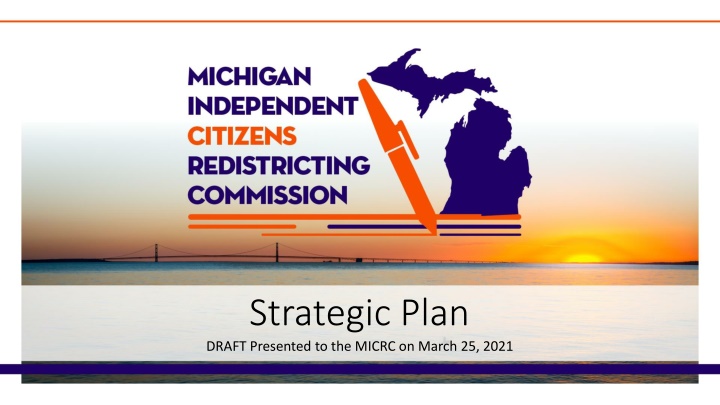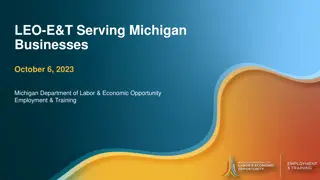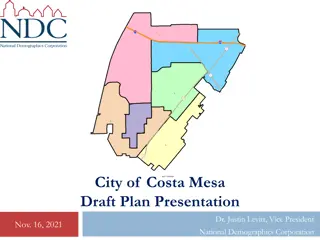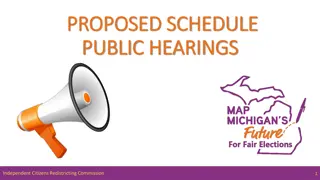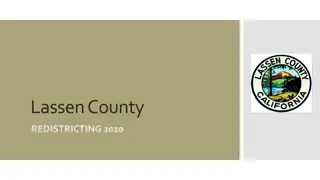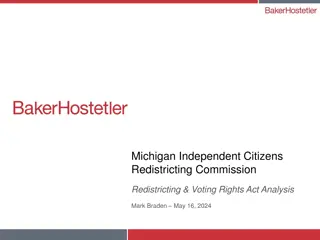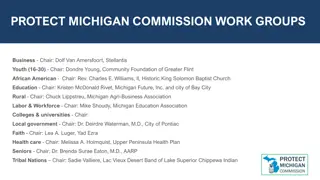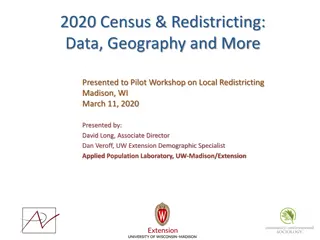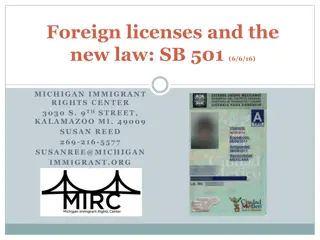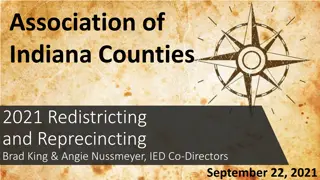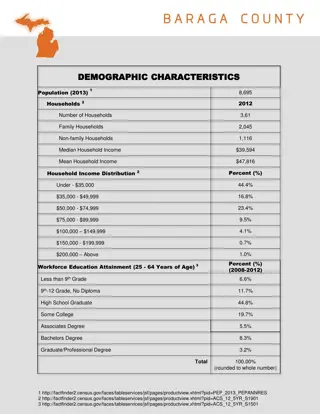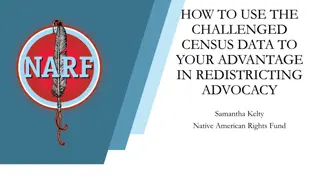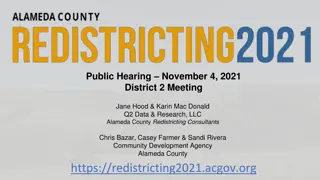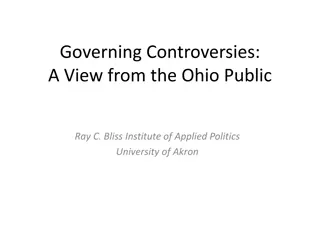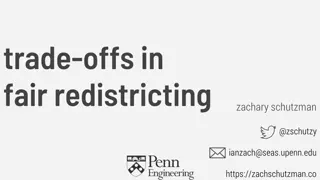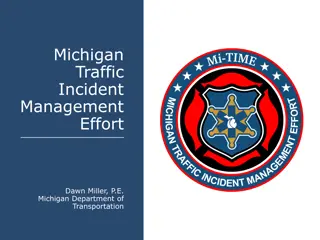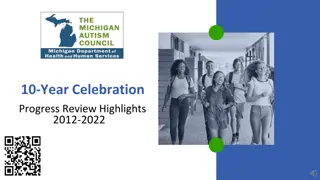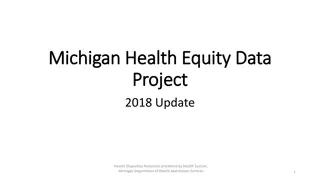Michigan Redistricting Strategic Plan Draft Overview
Presented to the MICRC, the strategic plan draft outlines guiding principles, core values, competencies, critical success factors, and goals focused on ensuring fairness and awareness in the redistricting process. Emphasizing integrity, transparency, and public participation, the plan aims to uphold the Constitution and engage Michigan residents across diverse backgrounds. Strategies include fair map drawing, public education, media engagement, and open meetings to foster a citizen-led, transparent, and fair redistricting process.
Download Presentation

Please find below an Image/Link to download the presentation.
The content on the website is provided AS IS for your information and personal use only. It may not be sold, licensed, or shared on other websites without obtaining consent from the author.If you encounter any issues during the download, it is possible that the publisher has removed the file from their server.
You are allowed to download the files provided on this website for personal or commercial use, subject to the condition that they are used lawfully. All files are the property of their respective owners.
The content on the website is provided AS IS for your information and personal use only. It may not be sold, licensed, or shared on other websites without obtaining consent from the author.
E N D
Presentation Transcript
Strategic Plan DRAFT Presented to the MICRC on March 25, 2021
Guiding Principles Mission: To lead Michigan s redistricting process to assure Michigan s Congressional, State Senate, and State House district lines are drawn fairly in a citizen-led, transparent process, meeting Constitutional mandates. Vision: To chart a positive course for elections based on fair maps for Michigan today and for the future. Core Values: Integrity Respect Transparency Purposeful
Core Competencies Actions exemplify honesty and professionalism. Responsibilities and integrity are put above personal or political gain. Thoughtful and purposeful dialogue, and collegiality are fostered. Respect, tolerance, and equality are extended towards others.
Critical Success Factors Michigan citizens from across the state and with diverse backgrounds participate meaningfully in the redistricting process. The Constitution is upheld and always at the forefront. All actions are undertaken with a commitment to fairness. The Code of Conduct, policies and procedures are followed. Discussion and deliberations occur in open meetings with the utmost transparency. Commissioners, consultants, and staff members work in an impartial manner to instill public confidence in the integrity of the redistricting process.
Goal #1: Fairness STRATEGIES 1. Commissioners will assure that lines are drawn in a fair, independent manner in live, open meetings. 2. The line drawing contractor will present redistricting plans that are fair, include input from public comments, are guided by RPV/RBV data analysis, and meet the criteria detailed in the Michigan Constitution in rank order. 3. The Voting Rights Act legal counsel will provide guidance to assure Federal criteria are met, including equal population and adherence to the Voting Rights Act. 4. Michigan residents will have fair and meaningful opportunities to participate in the process through public comment and submission of proposed maps.
Goal #2: Awareness STRATEGIES 1. There will be multiple opportunities for residents of Michigan to learn about the redistricting process. 2. Both paid and earned media, as well as social media, will be utilized to share information. 3. Meetings of the MICRC will be open meetings, broadcast in real time and recorded for later viewing. 4. A robust website will serve as a repository of information for the public. 5. Public Hearings, presentations, and town hall forums will engage directly with the public to provide information. 6. There will be continuing education provided to increase knowledge of the Commissioners and the general public.
Goal #3: Transparency STRATEGIES 1. Meetings of the Commission, including Public Hearings, will be open meetings. Meeting agendas with supporting documents and other Commissioner materials will be made available on the website Michigan.gov/MICRC. 2. While it is the goal to be open and transparent, should a member of the public request additional information through the Freedom of Information Act (FOIA), the request will be addressed according to the MICRC FOIA policy. 3. Work of the Commission will exemplify transparency in process and procedure in order to instill public trust. 4. Public comments, which will be accepted verbally at Public Hearings and Commission meetings, in writing via email or mail, and through a public comment tool, will be made available.
Goal #4: Engagement STRATEGIES 1. Members of the public will have multiple means and be encouraged to address the Commission and provide public comment. 2. Members of the public will be encouraged to identify Communities of Interest and inform the Commission about their locations and shared interests. 3. Statewide community groups with a shared interest in fair, transparent, citizen-led redistricting, will be encouraged to advocate on the characteristics of their communities.
Goal #5: Maximize Resources STRATEGIES 1. The fiscal appropriation provided to the MICRC, through taxpayer dollars, will be deployed effectively and efficiently. 2. Statewide partnerships and collaboration will be utilized to increase the capacity of the MICRC, including through volunteerism. 3. Staff will be hired to assist the Commission in achieving its goals.
